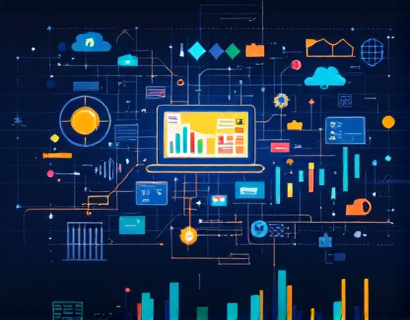Streamlining Educational Management: Cutting-Edge Software Solutions for Enhanced Learning and Efficiency
In the rapidly evolving landscape of education, the integration of advanced software solutions has become pivotal for educational institutions aiming to enhance their administrative processes, communication, and resource management. These cutting-edge tools not only streamline operations but also empower administrators to focus more on delivering exceptional education and fostering a collaborative learning environment. The adoption of Educational Technology (EdTech) solutions has transformed the way schools and universities operate, offering a range of benefits that extend beyond mere efficiency gains to encompass improved student outcomes and a more engaging educational experience.
Enhancing Administrative Processes
The primary advantage of implementing sophisticated software solutions in educational settings is the significant reduction in administrative burdens. Traditional methods of managing student records, scheduling, and resource allocation are time-consuming and prone to errors. Advanced software systems automate these tasks, ensuring accuracy and consistency. For instance, student information systems (SIS) centralize and manage all student data, from enrollment and attendance to grades and transcripts. This centralization not only simplifies data access for administrators but also enhances data security and privacy.
Moreover, these systems facilitate seamless integration with other institutional tools and platforms, creating a cohesive ecosystem that supports smooth operations. For example, integration with learning management systems (LMS) allows for automatic synchronization of student data, reducing manual entry and the risk of errors. This integration also enables real-time updates and notifications, keeping stakeholders informed and engaged.
Improving Communication and Collaboration
Effective communication is the backbone of any successful educational institution. Advanced software solutions play a crucial role in enhancing communication channels among students, teachers, and administrators. Communication platforms embedded within these systems provide a centralized space for discussions, file sharing, and collaboration. Features such as discussion forums, instant messaging, and video conferencing tools break down barriers and foster a more connected community.
Parent-teacher communication is another area where these solutions excel. Parental portals allow parents to access their child's academic progress, view schedules, and communicate with teachers directly. This transparency and accessibility help build stronger relationships and ensure that parents are actively involved in their child's education. Additionally, automated notifications and updates keep everyone informed about important events, deadlines, and policy changes.
Optimizing Resource Management
Resource management is a critical aspect of educational administration, encompassing everything from budgeting and procurement to facility maintenance and energy consumption. Advanced software solutions offer robust tools to optimize these processes, leading to cost savings and improved operational efficiency. Budgeting and financial management tools provide detailed insights into expenditures, helping administrators make informed decisions and allocate resources more effectively.
Procurement systems streamline the purchasing process by enabling online requests, approvals, and tracking. This not only reduces paperwork but also ensures compliance with procurement policies. Facility management tools monitor and manage the maintenance and usage of school facilities, scheduling repairs and optimizing energy usage. These tools contribute to a safer and more sustainable learning environment.
Personalizing the Learning Experience
One of the most significant impacts of EdTech solutions is the ability to personalize the learning experience for students. Adaptive learning platforms use data analytics and machine learning algorithms to tailor educational content to individual student needs. These platforms assess student performance and adjust the difficulty and type of content accordingly, ensuring that each student receives the support they need to succeed.
Additionally, these platforms provide teachers with valuable insights into student progress, enabling them to identify areas where students may be struggling and intervene promptly. This data-driven approach to teaching not only enhances student engagement but also improves academic outcomes. By focusing on personalized learning, educational institutions can better prepare students for the challenges of the future.
Fostering a Collaborative Learning Environment
A collaborative learning environment is essential for fostering critical thinking, creativity, and problem-solving skills. Advanced software solutions facilitate collaboration among students and teachers through various tools and platforms. Cloud-based document sharing and editing tools allow students to work together on projects in real-time, regardless of their physical location. This capability is particularly valuable in remote or hybrid learning settings, where traditional face-to-face collaboration is limited.
Discussion boards and collaborative workspaces within LMS platforms encourage ongoing dialogue and knowledge sharing. These tools create a virtual space where students can engage in peer-to-peer learning, share resources, and provide feedback. Teachers can also use these platforms to facilitate group projects and assignments, ensuring that all students are actively participating and contributing.
Enhancing Student Engagement and Motivation
Student engagement and motivation are key factors in achieving educational success. EdTech solutions offer a variety of interactive and engaging tools that can captivate students' attention and enhance their learning experience. Gamification elements, such as badges, points, and leaderboards, make learning more enjoyable and competitive. These elements can be integrated into various subjects to motivate students and encourage active participation.
Interactive simulations and virtual labs provide hands-on learning experiences that are both engaging and educational. These tools allow students to explore complex concepts in a safe and controlled environment, fostering a deeper understanding of the material. Additionally, multimedia content, including videos, animations, and interactive quizzes, cater to different learning styles and preferences, making the learning process more inclusive and effective.
Ensuring Data-Driven Decision Making
Data-driven decision making is crucial for the continuous improvement of educational institutions. Advanced software solutions provide comprehensive analytics and reporting tools that help administrators and educators make informed decisions based on real-time data. These tools offer insights into various aspects of institutional performance, such as student enrollment trends, academic performance, and resource utilization.
By analyzing this data, administrators can identify areas for improvement, allocate resources more effectively, and implement targeted interventions. For example, identifying underperforming subjects or student groups allows for the development of specific support programs. Similarly, tracking the effectiveness of new initiatives helps ensure that resources are being used efficiently and that goals are being met.
Challenges and Considerations
While the benefits of EdTech solutions are numerous, educational institutions must also be aware of the challenges and considerations involved in their implementation. One of the primary concerns is the digital divide, where not all students have equal access to technology and the internet. Institutions must ensure that all students can benefit from these tools, potentially by providing devices or internet access to those in need.
Data privacy and security are also critical issues. Educational institutions handle sensitive student information, and robust security measures must be in place to protect this data. Compliance with regulations such as the Family Educational Rights and Privacy Act (FERPA) is essential to maintain trust and avoid legal repercussions.
Furthermore, the successful implementation of EdTech solutions requires adequate training and support for staff. Teachers and administrators need to be proficient in using these tools to maximize their benefits. Ongoing professional development and technical support are crucial to ensure smooth adoption and usage.
Conclusion
The integration of advanced software solutions in educational institutions is transforming the way administration, communication, and resource management are handled. These tools not only streamline operations and enhance efficiency but also create a more engaging and personalized learning environment for students. By leveraging EdTech, educational institutions can focus more on delivering high-quality education and fostering a collaborative community. As technology continues to evolve, the potential for innovation in education remains vast, promising a brighter and more effective future for all stakeholders involved.










































